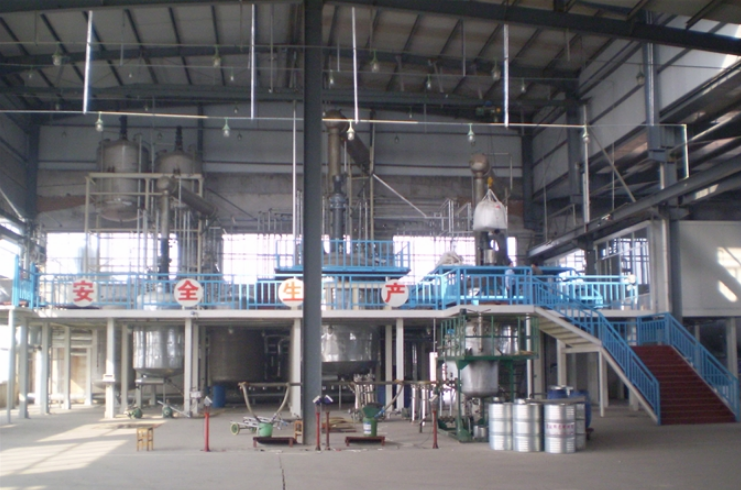Urea-Formaldehyde Glue, commonly referred to as Plastic Resin Glue, is a thermosetting resin produced from urea and formaldehyde. Widely utilized as an adhesive in the wood industry, this resin is extensively employed for bonding plywood, medium-density fiberboard (MDF), particleboard, and molded products. Urea-formaldehyde adhesives play a crucial role in creating various wood forms, such as interior-grade plywood and particleboard. This glue stands out as the predominant adhesive in the manufacturing of pressed wood and wooden boards.
Understanding Urea-Formaldehyde Glue
Urea-formaldehyde resin (UF resin) belongs to a category of synthetic resins created through the chemical reaction between formaldehyde (a gas derived from methane) and urea (a crystalline solid produced from ammonia). These resins are commonly used as adhesives for plywood, particleboard, and various wood products. When UF resins cure, they polymerize into interconnected networks, influencing the strength of the final adhesive. After setting and hardening, urea-formaldehyde resins form an insoluble three-dimensional network, making them resistant to melting or thermoforming.

Applications of Urea-Formaldehyde Glue
Urea-formaldehyde serves as an adhesive in various applications, including plywood, particleboard, wood panels, and bending laminations. Recognized as one of the top six adhesives by the Woodworkers Institute, Urea Formaldehyde is commonly found in products labeled as furniture grade, indicating water resistance. In contrast, adhesives labeled as construction grade typically contain phenol-formaldehyde, offering complete waterproofing.
While urea-formaldehyde glue generally exhibits water resistance, it may deteriorate under warm and humid conditions. Suitable for use in dry and protected areas, it is advisable to provide a protective layer such as paint or varnish if occasional exposure to moisture is expected.
There are instances of successful applications of urea-formaldehyde glue in small airplanes, demonstrating durability over time. Additionally, it finds use in boat construction, as discussed in the Yachting and Boating World Forums. Although not the sole adhesive for boat construction, it can be combined with epoxy or other waterproof glues. Manufacturers often enhance water resistance by incorporating melamine into the adhesive, a feature frequently highlighted in products advertised as having improved water resistance.
Advantages of Urea Formaldehyde glue
Firstly, this material solidifies into a hard and rigid form, which proves advantageous for bent laminations by minimizing spring back.
It is user-friendly and does not demand the same precision in joint quality as resorcinol or polyurethane. With gap-filling and load-bearing (strong) capabilities, it becomes sandable after setting, although clamping is necessary.
The clamping duration typically hovers around 6 hours, depending on temperature and brand. Urea-formaldehyde boasts an excellent open time of 20-30 minutes, varying with formulation, and it lacks the grabbing tendency seen in some other wood glues. Additionally, it can be washed away with water while still uncured.
Secondly, it falls under the moisture-resistant type II category, allowing the adhesive to endure repeated drenching and drying. While some manufacturers of marine plywood glue claim their Plastic Resin Glue to be waterproof, it is universally acknowledged as water-resistant.
Thirdly, it seamlessly blends with wood, minimizing visible glue lines, thanks to its typical beige color. The color may vary by brand, ranging from light brown to beige. Even in warm temperatures, it avoids deformation or crawling.
Urea-formaldehyde has a proven track record for reliability and finds widespread use in both industrial and smaller-scale projects due to its affordability and exceptional adhesion properties.
Lastly, its simplicity of use is noteworthy; usually available as a powder to be mixed with water. It sets more effectively at a relatively higher temperature, with most products recommending around 21 degrees Celsius.
Disadvantages of Urea Formaldehyde Glue
When exposed to water at high temperatures, cured urea-formaldehyde can undergo hydrolysis, releasing formaldehyde and compromising the strength of the adhesive bond. Consequently, it is categorized as water-resistant rather than waterproof, and caution is advised when considering its use in marine plywood.
Due to the unpleasant and toxic nature of uncured resin, urea-formaldehyde should be applied in well-ventilated spaces. While substantial warnings accompany most uncured modern adhesives, ensuring proper education for users is always advisable.
The shelf life of urea-formaldehyde adhesive is limited to one year, and it should be stored in a dry environment, typically within airtight plastic containers.
Safety and Detection
When it was discovered that urea-formaldehyde insulation (UFFI) was emitting formaldehyde, it gained a negative reputation. However, recent formulations no longer employ the practice of adding extra formaldehyde to ensure complete reaction, addressing this issue. In applications such as boatbuilding, outgassing is not a significant concern.
The use of formaldehyde in construction necessitates continuous monitoring of formaldehyde levels. To ensure that personnel are not exposed to unsafe concentrations of formaldehyde in the air, it is essential to utilize appropriate detection instruments for ongoing monitoring.
Real-time data allows for the immediate detection of potential overexposures, eliminating the need to await laboratory analysis. If harmful levels are identified, employees can be evacuated until the risk is mitigated.
Formaldehyde detection and measurement equipment can monitor formaldehyde, temperature, and humidity in real-time. These units can function as manual, hand-held devices or continuous monitoring tools with data logging capabilities extending up to one month. In manual mode, the equipment can also provide instantaneous single-point measurements of formaldehyde, temperature, and humidity.
Certain devices are capable of accurately detecting formaldehyde concentrations in parts per million and mg/m3 across a wide range of temperature and humidity. The built-in memory and real-time clocks facilitate the logging of all three parameters and their corresponding times, enhancing monitoring and analysis capabilities
Conclusion
Urea-formaldehyde glue stands out as a widely utilized adhesive for numerous reasons, including its cost-effectiveness, ease of application under various curing conditions, low cure temperatures, water solubility, water resistance, resilience against microorganisms and abrasion, hardness, excellent thermal properties, and its colorless nature.
The applications of urea-formaldehyde span across various industries, encompassing decorative laminates, textiles, paper, foundry sand molds, wrinkle-resistant fabrics, cotton blends, rayon, corduroy, and other materials. Additionally, it serves as an adhesive in wood applications and plays a role in manufacturing electrical appliance casings, such as desk lamps.
















